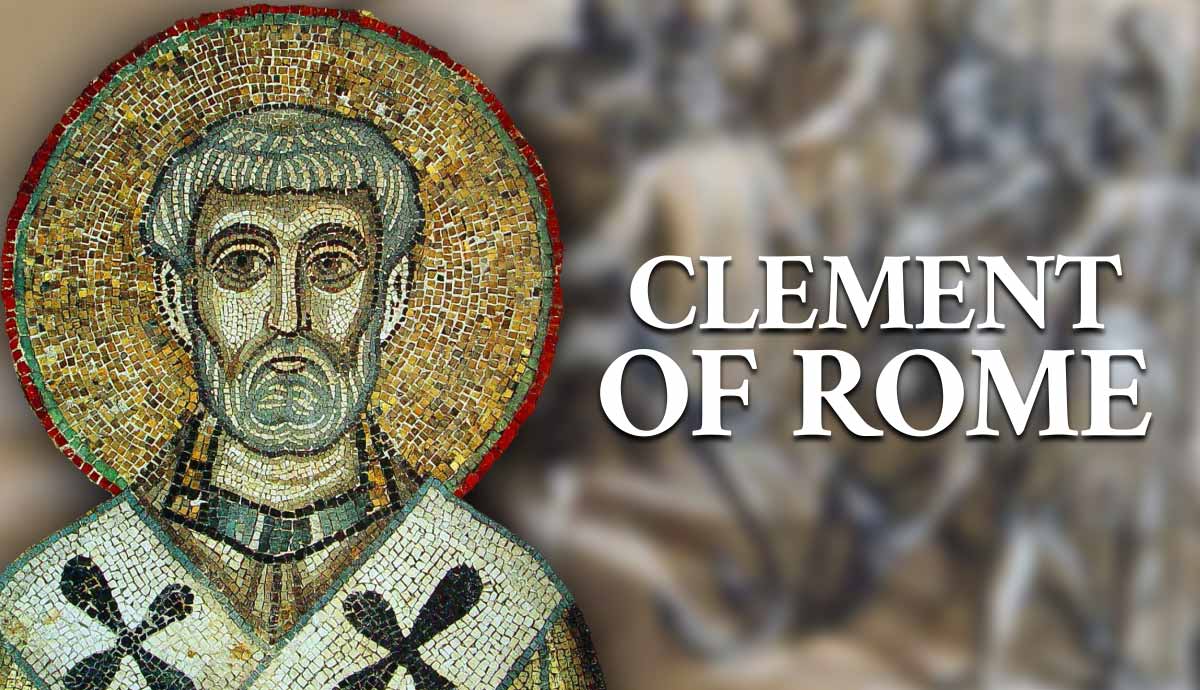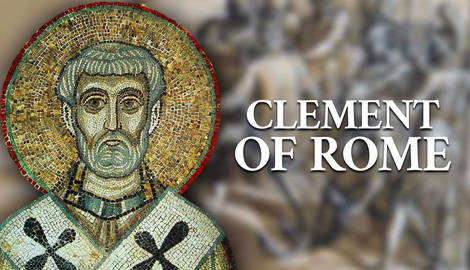
Clement of Rome was one of the early leaders of the Christian church who, along with Ignatius of Antioch and Polycarp of Smyrna, were known as the Apostolic Fathers due to their writings and reputation. Clement was supposedly appointed to be the Bishop of Rome by the apostle Peter, and there is some minor controversy as to whether Clement is considered the first, second, or third Pope (Linus and Anacletus are the other two church leaders who may hold those distinctions).
Clement’s Epistle to the Corinthians

The First Epistle of Clement was likely composed by Clement to the Corinthian church late in the first century. At present, Clement’s first epistle, along with the Didache, is the earliest known Christian work after the New Testament was completed. Clement’s letter is a lengthy instruction to the Corinthian church, primarily regarding their removal of church leaders for internal political reasons rather than sinful behavior. Clement references multiple epistles of Paul, including Romans, Galatians, Ephesians, and Philippians. He also makes extensive Old Testament references to Cain and Abel, Moses, David, and others, displaying a significant knowledge of Old Testament writings.
Paul and Peter:

Clement speaks of the deaths of the Apostles Paul and Peter with great praise, extolling their endurance through multiple trials. Paul’s sufferings are particularly pointed out: “seven times in bonds, had been driven into exile, had been stoned.” Clement also points out how far Paul had ventured, possibly travelling as far as Spain. His acceptance of Paul as an Apostle speaks some to Paul’s acceptance within the early church, as Paul was not among the 12 original disciples and was a later convert.
Clement and the Phoenix

Clement also makes an allusion to the legendary phoenix to make a point about his belief in the resurrection. He gives a full description of the mythical creature including its long life, burial nest, and resurrection as a worm.
Clement’s Benediction

Finally, Clement ends with a benediction that is similar to those found in the New Testament:
“The grace of our Lord Jesus Christ be with you and with all men in all places who have been called by God and through Him, through whom be glory and honor, power and greatness and eternal dominion, unto Him, from the ages past and forever and ever. Amen.” 1Clem 65:2
Because of the extensive writing and his reputation within the early church, Clement is considered an Apostolic Father. His Epistle to the Corinthians affirms many Christian beliefs and provides some historical authenticity to both New Testament writings, early church practices, and the identities and fate of some of the Apostles who knew, walked with, and were taught directly from Jesus Christ Himself.
Clement of Rome and Martyrdom

Clement was possibly martyred (killed for his faith) by being tied to an anchor and thrown into the sea under the rule of the Roman Emperor Trajan following a mass conversion of prisoners to Christianity at Chersonesus. In many paintings of Clement, an “anchored cross” is shown as his symbol (often as a necklace), a combination of his faith and fate.










